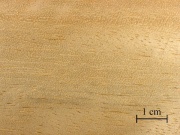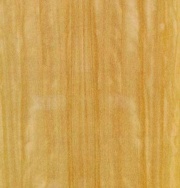Difference between revisions of "Avodiré"
Jump to navigation
Jump to search
m (Text replace - "== Authority ==" to "== Sources Checked for Data in Record ==") |
|||
| Line 24: | Line 24: | ||
|} | |} | ||
| − | == | + | == Sources Checked for Data in Record == |
* Ralph Mayer, ''A Dictionary of Art Terms and Techniques'', Harper and Row Publishers, New York, 1969 (also 1945 printing) | * Ralph Mayer, ''A Dictionary of Art Terms and Techniques'', Harper and Row Publishers, New York, 1969 (also 1945 printing) | ||
Revision as of 12:56, 29 April 2016
Description
A hard, pale yellow wood from the tree, Turraeanthus africana, native to tropical western Africa. Avodiré darkens to a golden yellow on exposure. The wood does not have distinct growth rings but does have distinct fine pores. The tough, hard timber has a straight to slightly wavy and interlocking grain with a smooth Mahogany-like texture that polishes to a satiny surface. Avodiré is used for plywood, furniture, veneer, and decorative work.
Synonyms and Related Terms
Turraeanthus africana; avodiré (Fr.); avodire; African satinwood; apaya; lusamba
Other Properties
Light colored. Rings: obscure. Pores: diffuse. Rays: obscure. Grain: faint. Tough
| Density | 34 ppcf |
|---|---|
| Molecular Weight | specific gravity = 0.55 |
Sources Checked for Data in Record
- Ralph Mayer, A Dictionary of Art Terms and Techniques, Harper and Row Publishers, New York, 1969 (also 1945 printing)
- Random House, Webster's Encyclopedic Unabridged Dictionary of the English Language, Grammercy Book, New York, 1997
- H.L.Edlin, What Wood is That?, Viking Press, New York, 1969
- Gordon Hanlon, contributed information, 1998

